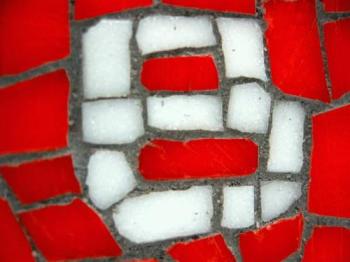"The central Christian belief is that Christ's death has somehow put us right with God and given us a fresh start. Theories as to how it did this are another matter." Mere Christianity
Three main theories have been put forward over the last two thousand years as to how Christ's death puts us right with God and gives us a fresh start in life.
- One theory is that human beings are enslaved by sin, death and Satan--all objective powers. God defeated these powers in a cosmic battle won through Christ's life, death and resurrection. Christ's triumph in this cosmic battle is especially seen in his ascension during which "he led captives in his train" (Ephesians 4:8; Psalm 68:18). This cosmic theory of the atonement is most associated with the 20th century theologian Gustaf Aulen who saw this view as characteristic of Paul's teaching, the early Greek fathers, and the theology of Martin Luther.
- Another theory of the atonement (how Christ makes us "at-one" with God again) sees the disobedience of humanity as nothing less than a cosmic affront to God. Such an affront requires an infinite sacrifice and satisfaction. Since no human being can offer a sufficient sacrifice to atone for such cosmic rebellion, God offered to do it by becoming human in Jesus of Nazareth, suffering and dying to pay the penalty for sin. As Paul says in Romans 6:23--"For the wages of sin is death, but the gift of God is eternal life in Christ Jesus our Lord." This satisfaction theory of the atonement was first fully developed by St. Anselm (1033-1109). This theory became part and parcel of Roman Catholic orthodox doctrine and has received further development in Protestant theology where it is often referred to as the substitutionary theory of the atonement.
- A third major theory of the atonement sees the human predicament mainly in terms of human fear of God from which human beings must be freed in order to personally respond to God's love. Humans are moved by the demonstration of God's love in Christ, particularly in the cross of Christ, to offer their own lives to God in loving response. "But God demonstrates his own love for us in this: While we were still sinners, Christ died for us" (Romans 5:8). This "moral influence" theory of the atonement was first propounded by Peter Abelard (1079-1142).
However, as Lewis points out, accepting any one or all of these theories of the atonement is not essential to being a Christian. "A man can eat his dinner without understanding exactly how food nourishes him. A man can accept what Christ has done without knowing how it works: indeed, he certainly would not know how it works until he has accepted it."
"We are told that Christ was killed for us, that His death has washed out our sins, and that by dying He disabled death itself. That is the formula. That is Christianity. That is what has to be believed. Any theories we build up as to how Christ's death did all this are, in my view, quite secondary: mere plans or diagrams to be left alone if they do not help us, and, even if they do help us, not to be confused with the thing itself."
"God, Sovereign Lord of all, you loved the world so much that you gave your only Son, born of a woman, born under the law, to suffer, die and rise again, so that everyone who has faith in him through the indwelling of the Holy Spirit may advance in wisdom and your favor possessing eternal life. This is my faith. Help me where faith falls short." Lancelot Andrewes (1555-1626)



















